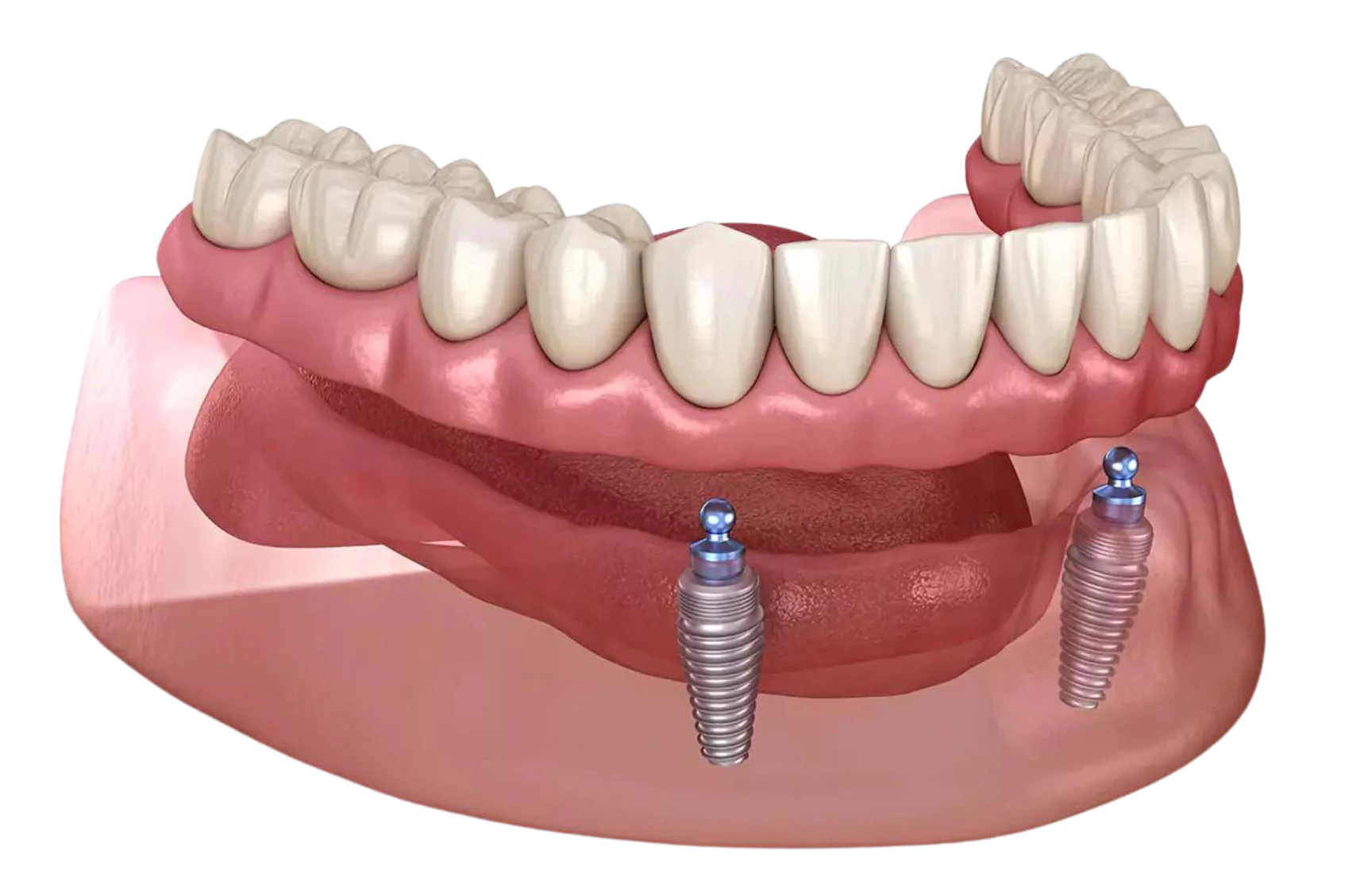
If you’re seeking ways to fill the gaps left by missing teeth, implant-supported overdentures offer an ideal solution. They address the issues associated with traditional dentures while remaining more cost-effective than full-mouth implants. Our goal is to help you decide if this procedure is right for you. Feel free to contact our team for further information on dental implant-supported overdentures in India.
An overdenture is a prosthetic dental device designed to replace a full set of missing teeth. Similar to traditional dentures, overdentures rely on suction or adhesive for stability, but they also utilise several implants placed in your jaw for added security. The benefits of this approach are evident, particularly for those who have struggled with ill-fitting dentures. Implant-supported overdentures closely resemble natural teeth, greatly enhancing functions like eating, smiling, and laughing. Additionally, they help prevent bone loss, a common consequence of tooth loss.
Other names for overdentures include:
We will explain the meanings behind these terms as we proceed.
Compared to traditional dentures, implant-supported overdentures offer numerous benefits to patients who choose this option:
Various types of implant overdentures are available today, each with its own advantages and considerations. Let’s explore them based on different categories:
If you’re considering getting overdenture implants in India, here’s a general overview of what you can anticipate. It’s important to note that the specific process may vary slightly for each individual.
Please note that this is a general outline, and your specific procedure may vary. It’s essential to consult with our partnered dental professional for personalised guidance and information. The cost of overdentures in India can vary depending on several factors, including:
It is recommended to schedule an online video call consultation with an oral surgeon who can examine your mouth and provide a detailed quotation specific to your case.
Traditional dentures are generally more affordable. However, they come with certain drawbacks such as being completely removable, potential slippage, and a less natural look and feel.
Overdentures address these issues by providing a more stable and aesthetic solution. They can’t slip out of place, and certain types of overdentures don’t cover the roof of the mouth. Additionally, overdentures help prevent bone resorption by mimicking natural tooth roots and maintaining jawbone structure.
While dentures are more cost-effective, many patients find the health and quality of life benefits offered by implant overdentures worth the additional cost.
All-on-4 is a type of permanent, full-mouth overdenture system. It differs from snap-on dentures as it is fixed in place with screws and not removable.
Some notable features of the All-on-4 system include:
If you need to replace all your teeth and prefer the idea of fixed overdentures, the All-on-4 system may be recommended. However, other overdenture systems are also available, and it is advisable to discuss your options further during an appointment.
Full-mouth dental implants involve placing individual implants for each missing tooth, which can be expensive. As each jaw typically requires around 8 implants, the cost of full-mouth dental implants is likely to be more than double that of implant-supported overdentures. If you need to replace all your teeth and are considering which implant system would be best, it is recommended to schedule an online video call consultation where the options can be explained in greater detail.
Unleash the power of your smile and embark on a life-changing journey today! Embrace a transformational experience that will redefine your confidence and elevate your smile to new heights. Take the first step towards a radiant future and unlock the extraordinary potential within you. Let your smile become the symbol of your transformation and embrace the incredible possibilities that Await.

Implant overdentures offer improved comfort compared to traditional dentures. The implants provide stability, reducing movement and discomfort while speaking, eating, or laughing. Additionally, overdentures are customised to fit the individual’s mouth, enhancing comfort and reducing irritation.
The implant overdenture procedure is typically performed under local anaesthesia, ensuring that the area being treated is numb. Patients may experience some soreness or discomfort after the surgery, but this can be managed with prescribed pain medication. Your dentist will provide guidance on managing any postoperative discomfort.
The duration of the implant overdenture procedure can vary depending on individual factors such as the number of implants needed, the need for extractions or bone grafts, and the healing process. In some cases, same-day temporary overdentures can be provided, while in others, it may take several months to complete the process.
The cost of implant overdentures depends on various factors, including the number of implants required, the type of implants used, additional procedures like extractions or bone grafts, and the materials used for the overdenture. While they may have a higher initial cost compared to traditional dentures, many patients find the long-term benefits and improved quality of life worth the investment.
Not everyone is a suitable candidate for implant overdentures. Adequate bone volume and density are necessary to support the implants. A thorough examination and assessment by a dental professional are required to determine if you are a good candidate for implant overdentures.
Proper care is essential for maintaining the longevity and function of implant overdentures. Removable overdentures should be cleaned regularly using a soft-bristle brush and a denture cleaning solution. Fixed overdentures should be brushed like natural teeth, with extra attention given to cleaning the area between the denture and the gums. Regular dental check-ups are also important for monitoring the health of the implants and overall oral health.
The lifespan of implant overdentures can vary depending on factors such as oral hygiene, bone health, and regular dental check-ups. With proper care, including regular cleaning and maintenance, implant overdentures can last for many years, typically between 5 – 10 years or even longer.
Stay up-to-date with our latest updates!
We will never send any spam emails.
